Astronomical Imaging – Tracking Mounts
Astronomical Imaging – Tracking Mounts
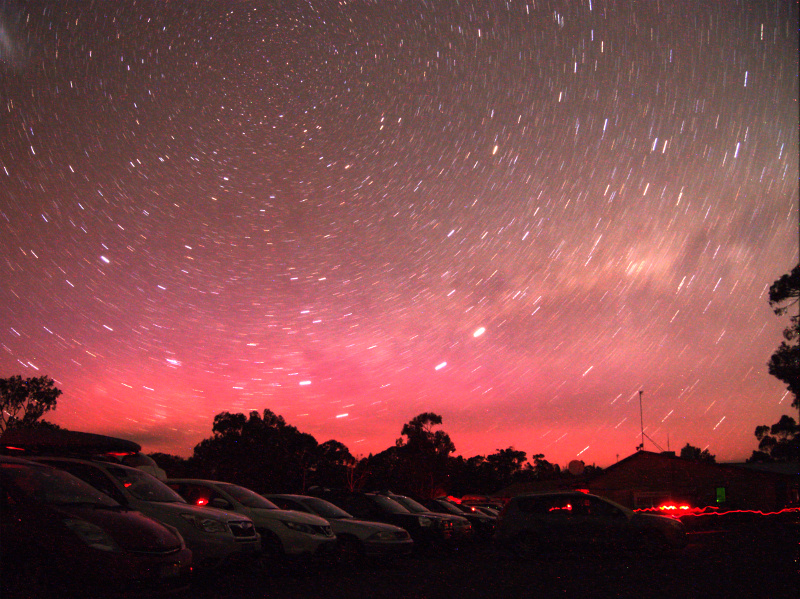
One of the difficulties with astrophotography is that the earth is rotating on its axis (see diagram below) which causes the stars to move in a pinwheel motion across the sky, in an effect called Diurnal motion. Diurnal motion can be easily observed by taking a camera with a wide-angle lens, sitting it on a tripod and taking a bulb or time exposure. This is what I did for the photo above, which was made in late 2015 from Victoria, Australia, where I made a single 5 minute long exposure of the sky that clearly shows diurnal motion (evidenced by the star trails). A display of Aurora Australis at the time caused the strong red glow in the sky.
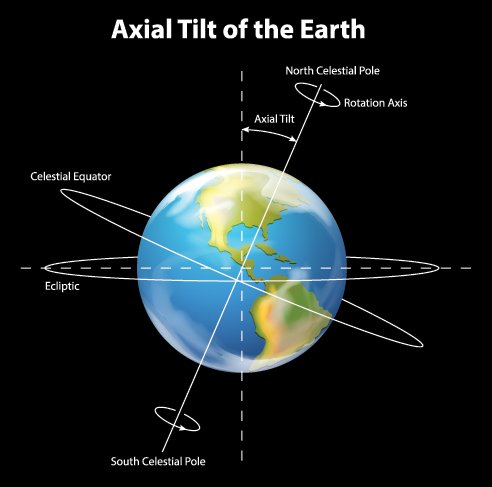
When is Diurnal Motion a Problem
The impact of diurnal motion on astrophotography increases proportionally with increased focal length.
Below is a graph generated in excel which provides a guide to maximum exposure for a given focal length, before stars begin to trail. It is conservative, so that it might be possible to double these times before trailing becomes objectional. As an example, using the graph, a camera with a 50mm focal length lens will start to show trailing at less than 2 seconds. It should also be clarified that focal length used is “actual” rather than “equivalent”.
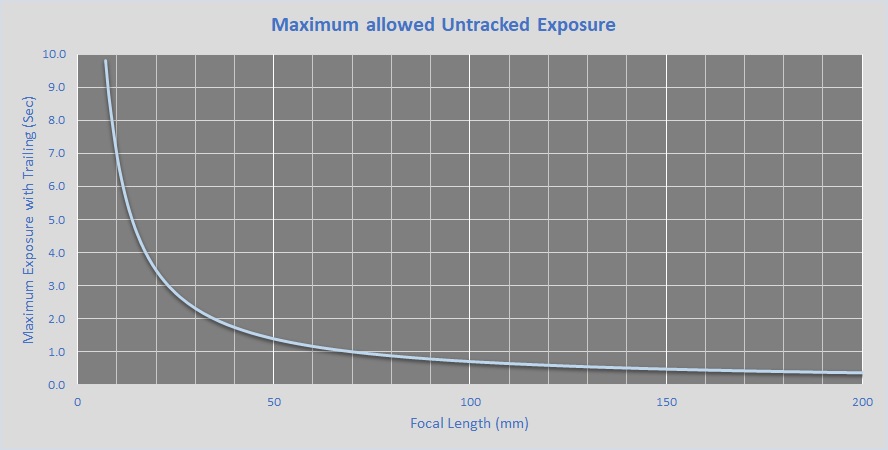
Another problem caused by diurnal motion is that the target object will not remain in the image field for very long. Quite clearly some form of being able to track diurnal motion is essential to get good photographs of astronomical objects.
German Equatorial mounts
The traditional solution to solving star trailing/diurnal motion is to use a German Equatorial mounts. These mounts rotate in a way that matches the motion of the sky and allow stars to remain fixed in the field of view of the telescope. They are generally very solid and heavy which helps dampen vibrations, and typically have a precision worm drive connected to a stepper or servo motor. A picture of one of the popular mounts (a Skywatcher EQ8) is shown in the picture below.
Below is an image of galaxy NGC1365 using Celestron CGEM-DX German Equatorial mount equipped with Celestron C14 telescope in Hyperstar mode. NGC1365 is over 50 million light years away and is a very large galaxy, and in this image the spiral arms and some of the brighter star form regions are visible. The image itself is a stack of 157 individual exposures of 10 seconds each. I’ll discuss image stacks in my next article, but suffice to say it dramatically improves image quality.
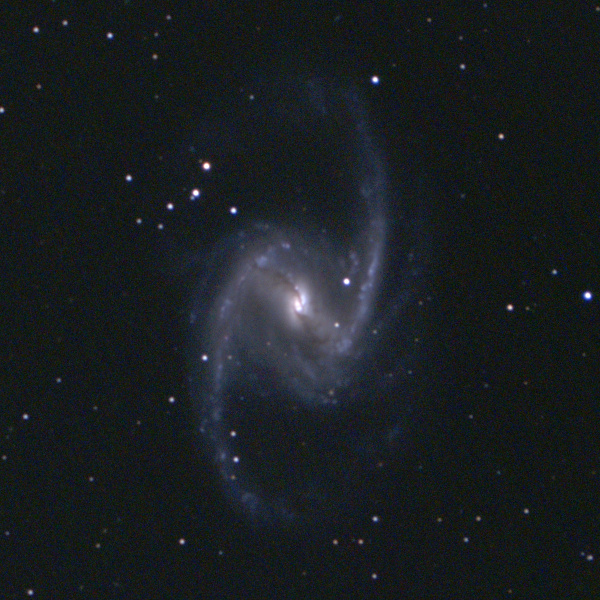
Equatorial Platforms
Sometimes it is only required to track a camera with a lens, and a conventional equatorial mount is overkill for this application. Several manufacturers have introduced miniaturized tracking platforms designed to be very portable and are designed to be transported in a plane. These are proving extremely popular as it brings astrophotography within the range of a many people without the expense or hassle of a large equatorial mount.
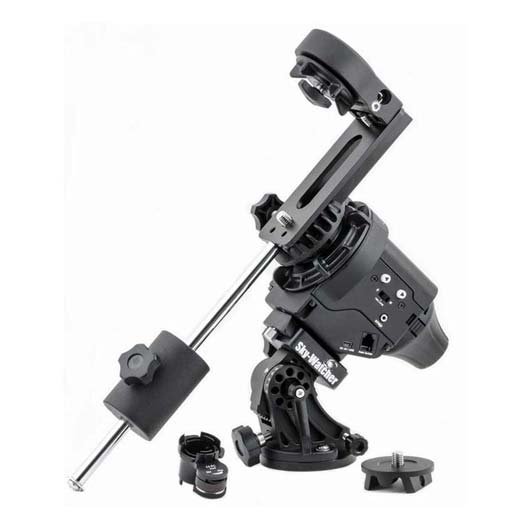
This type of device can be used to track a camera with a short telephoto lens. This image was made with a 100mm lens and a Canon 300D (I made this way back in 2004).

Alt-Azimuth tracking
Alt-Azimuth telescopes refer to the Dobsonian style telescopes that are the most common type of telescope design used by amateurs. Some of these telescopes have built in Tracking capability that emulates the tracking of equatorial mount. This is certainly a great improvement over having no tracking, however, there is one downside in that the Field rotation is introduced. Field rotation occurs because even though the tracked object is centered, the surrounding area rotates over time.
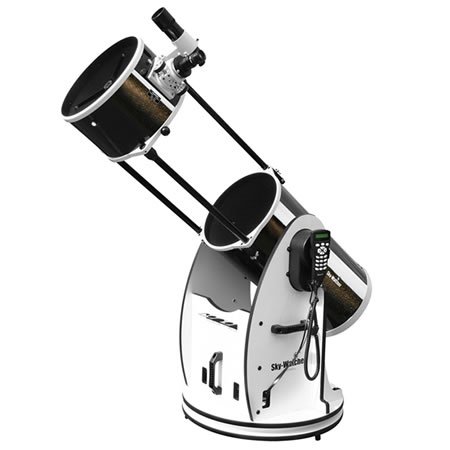
Despite field rotation, it is possible to get good images of the planets as well as some of the brighter “deep sky” objects. Here is a picture of Mars I obtained in 2016 with a tracking Dobsonian (the same model as shown in the picture above).
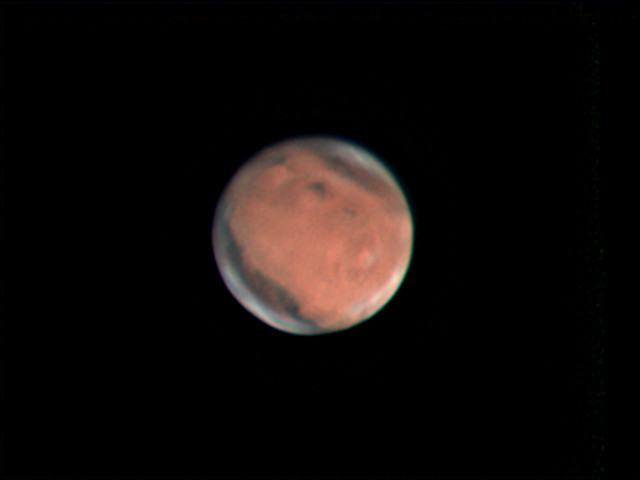
Load Capacity
It is important that the mount is not overloaded by the telescope and its accessories. This is a common problem and results in difficulty in the mount steadily tracking the stars. Manufacturers will often quote the carrying capacity of a mount, but unfortunately this is not always accurate and it is best to consult others who have similar equipment or experience with the same equipment. Keep in mind a mount that works perfectly for visual observing and doing planetary photography, may not have enough capacity for long exposure astrophotography.
Tracking Errors
The most common type of drive mechanism in an equatorial mount is the worm wheel drive as shown in the photo below (which is a high quality Ed Byers drive). Manufacturing tolerances of the gear’s as well as necessary clearances to prevent the gears from binding cause errors in tracking that will blur image detail.
A common solution to combating this problem is to use a separate guiding camera that sends correction commands back to the mount, smoothing out tracking errors. Generally, this is only an issue for long exposure images, as shorter exposures tend not to show the problem (hence planetary and moon photography don’t really need a separate guiding camera).
Other Considerations
To cap of this article, I will mention there are some other considerations when selecting a tracking platform. These are:
- Portability, can you lift it and does it need to fit into your car?
- If it is not portable, you should consider a pier and observatory.
- GOTO – the ability to automatically slew to objects. This feature is very useful.
- Can the mount be controlled via a computer, and is there a need to control it remotely. If it is being controlled by a Windows system, having an ASCOM compliant driver is also important.
- Will I need to autoguide, i.e this is separate camera used to send feedback to the mounts controls to correct for small errors in tracking.
References
Skywatcher Australia (various images). http://skywatcheraustralia.com.au/
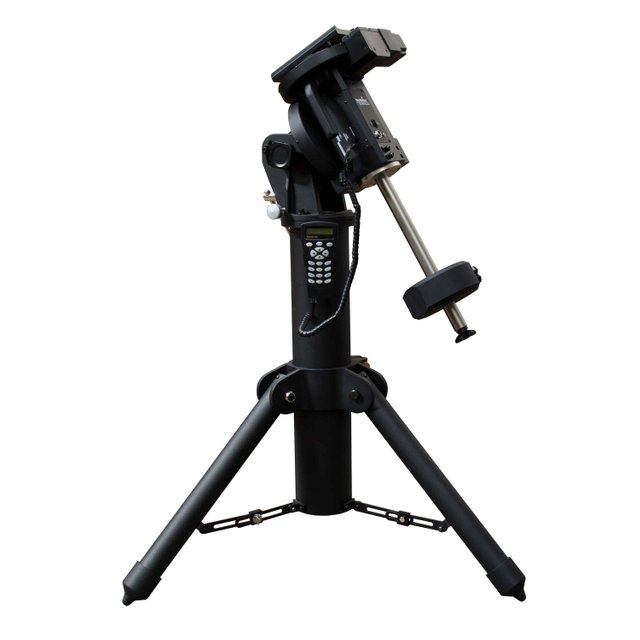
Great post and thanks for making a follow up on my recommendation :D,
I'm glad you enjoyed it! I plan to do "image stacking" this weekend, which is a method of greatly improving the quality and resolution of images. Its used a lot in astronomy, and I'm suprised its not done more in normal photography.
If it is what I think it is, I feel why image stacking isn't done just for normal plain photography is probably quite obvious. (I'm making presumptions) If it is taking multiple images of the same object and stacking it over one another in photoshop it probably look quite weird possibly creating weird countouring effect.
Great post! learned a lot from this.
Thank you!
Wow, incredible. Thank you for sharing your knowledge! <3
Thank you @shlomit . I worked out I've been following astronomy for 42 years (since when I was 9). My first photo was of Halley's comet next to the crescent moon in February, 1986 (which I'll need to find) and I haven't lost the interest since. If you do a bit of google search for my name you'll see I have also discovered a couple of comets.
Wait! Are you the The Lovejoy! I had a great time observing C/2014 Q2 Lovejoy. Thanks and glad to be connected here!
@hrj. That's me :) C/2014 Q2 was a real suprise, it was only expected to stay faint but during Jan 2015 you could see it with the unaided eye without too much trouble if you knew where to look.
I have googled you and saw your discoveries, it is a great honour to meet you here! ^_^
I love astronomy and space is a huge inspiration in my artwork, thank you for sharing your inspiring images!
Thank you, I really appreciate it. I have to say its a real honour to get thanks from people across the globe.
Well, you deserve it all :)
<3
Did you know who track the galaxy for the first time ?
terrylovejoy!! Thank you, your Post.